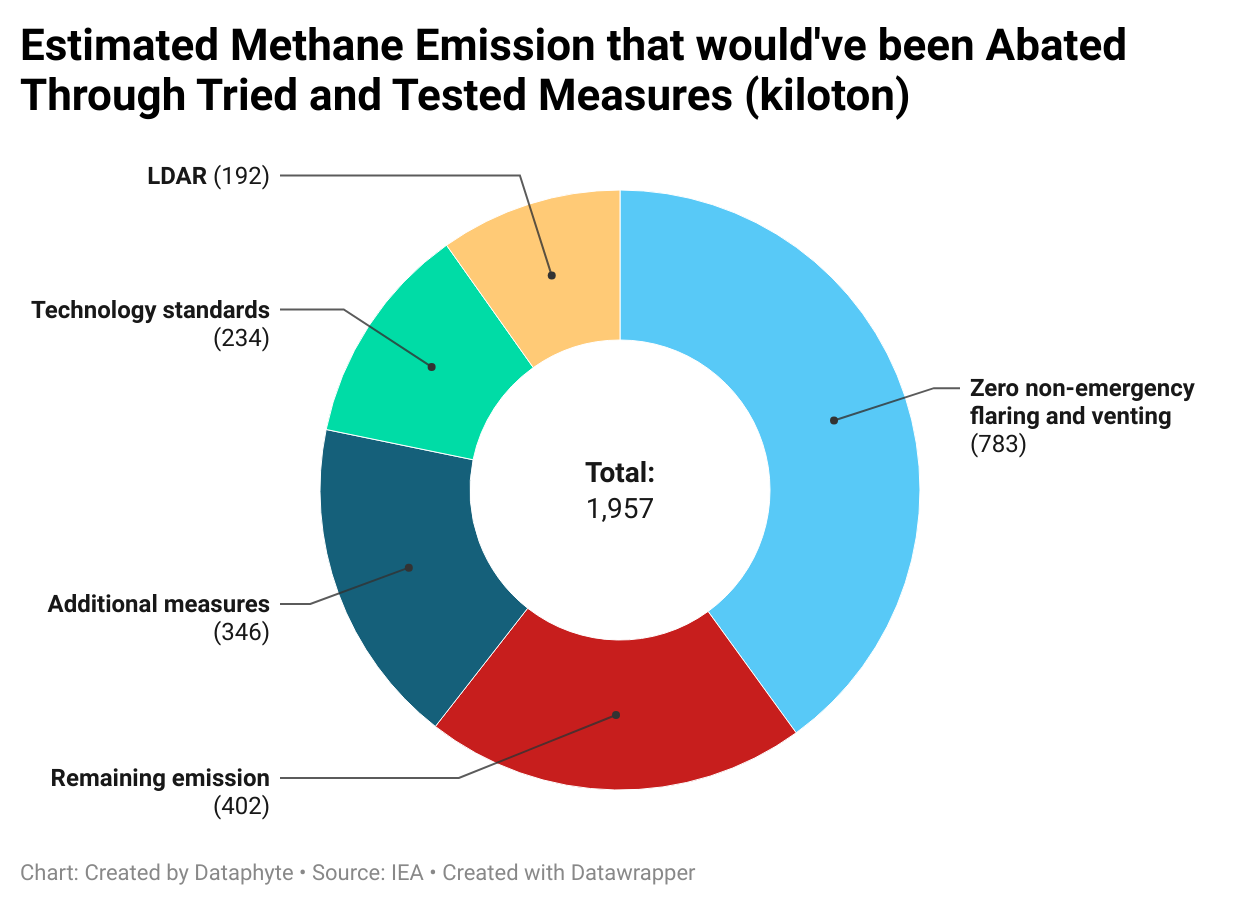At least 1,957 kiloton (kt) of methane was emitted in Nigeria in 2022. But 1,555 kt of this could have been abated if the country adequately applied the tried and tested policies in the oil and gas industry.
This revealed that the country would have prevented at least 79.46 percent of its methane emissions in 2022.
Attaining net-zero methane emissions is a gradual process that involves strategic steps. Nigeria has made or taken active steps towards attaining this over the years. These steps include making the global methane pledge, signing up to the global methane pledge energy pathway, pledging to zero routine flaring by 2030, and the 2070 target for net-zero emissions.
To attain zero non-emergency routine emissions through flaring and venting, some tried and tested policies were identified, which should have reduced emissions by 61.76 per cent in 2022. These policy measures are zero non-emergency flarings and venting, technology standards, Leak Detection and Repair (LDAR), and additional measures,
Most of the emitted methane would have been prevented through zero non-emergency flying and venting. If duly implemented, this measure would have prevented the emission of 783 kt of methane in 2022. The measure alone would have abated 40 per cent of the entire methane emission.

Another 234 kt of methane emissions would have been prevented through technology standards. One such technology is direct air capture, where high-powered fans draw the methane into a processing facility. The methane can then be permanently stored in underground reservoirs or used to make other products. Thus, 11.96 per cent of the would have been prevented through this method.
One hundred and ninety-two kiloton (192 kt) of methane would have also been prevented from being released into the atmosphere by adopting LDAR. The goal of LDAR is to locate leaky machinery so that it can be repaired to reduce emissions. A component required to comply with LDAR regulations must be checked periodically to see if it leaks. This would have prevented 9.81 per cent of the emission.
Other additional measures would have prevented the emission of 346 kt, 17.68 per cent of methane emissions in 2022.
If all these measures were adopted, only 402 kt, representing 20.54 per cent of the total emissions, would have been emitted.
The need to reduce methane emissions remains crucial as methane helps to create ozone, which impairs air quality, causes several animal health problems, causes premature death in humans, and lowers crop yields. Ultimately, these consequences will be mitigated by lowering atmospheric methane levels.
Also, the rate of global warming can be significantly slowed down by concentrating just on anthropogenic or man-made methane emissions.



